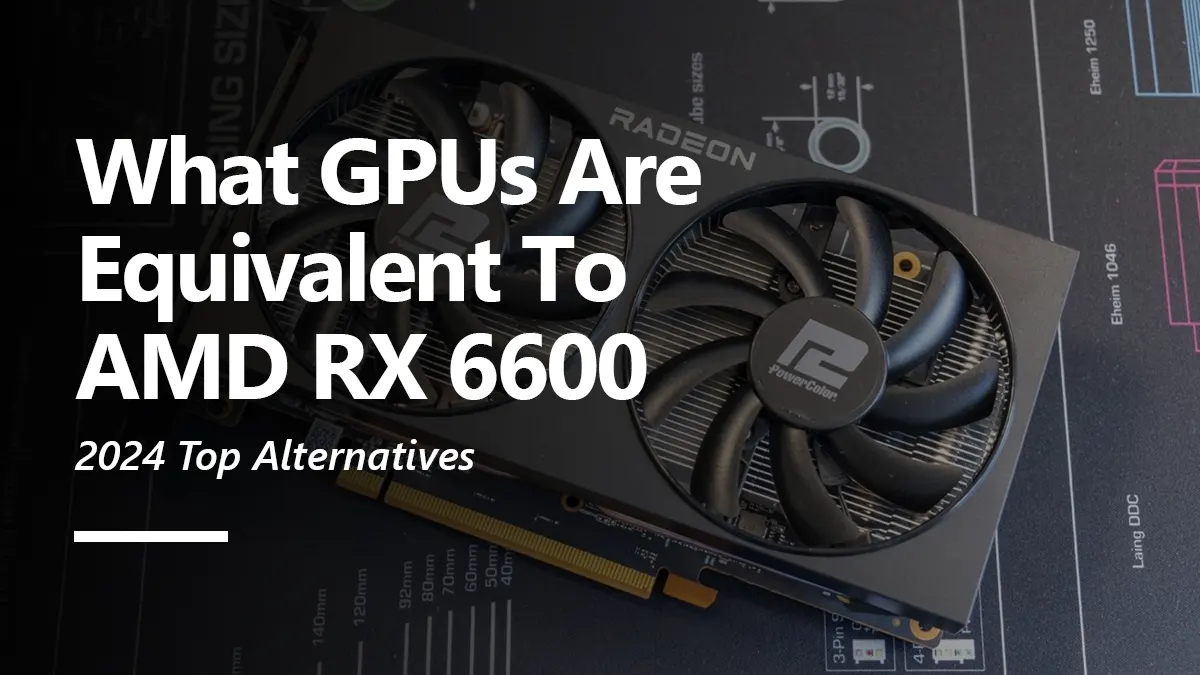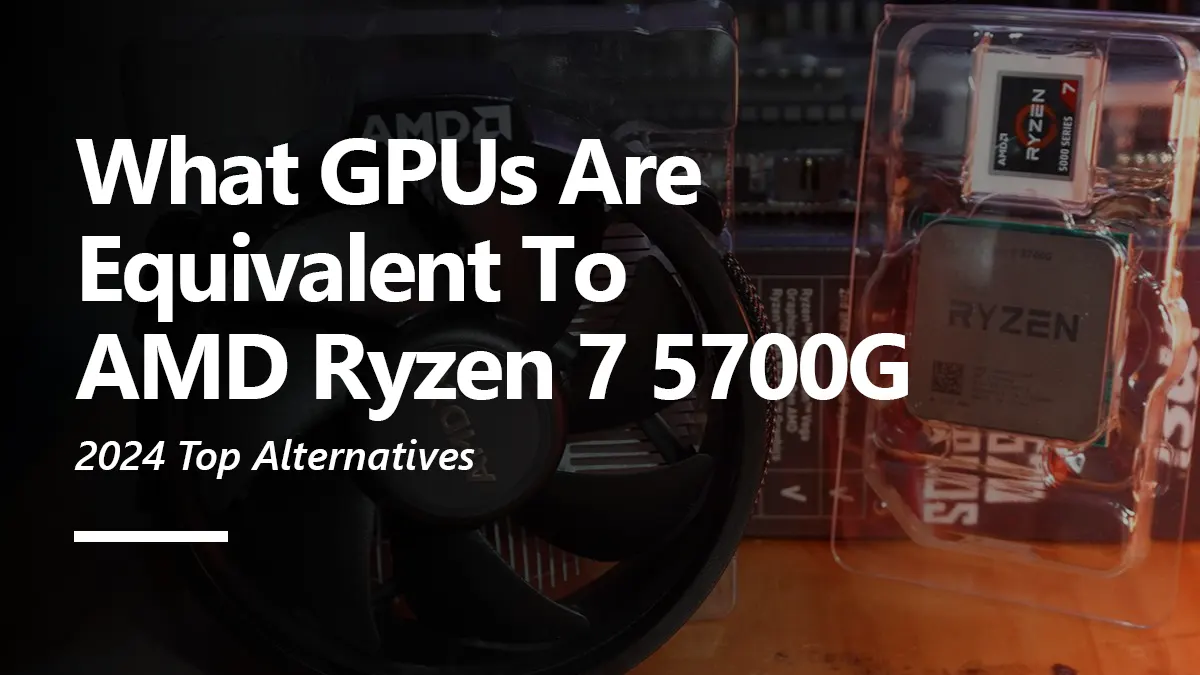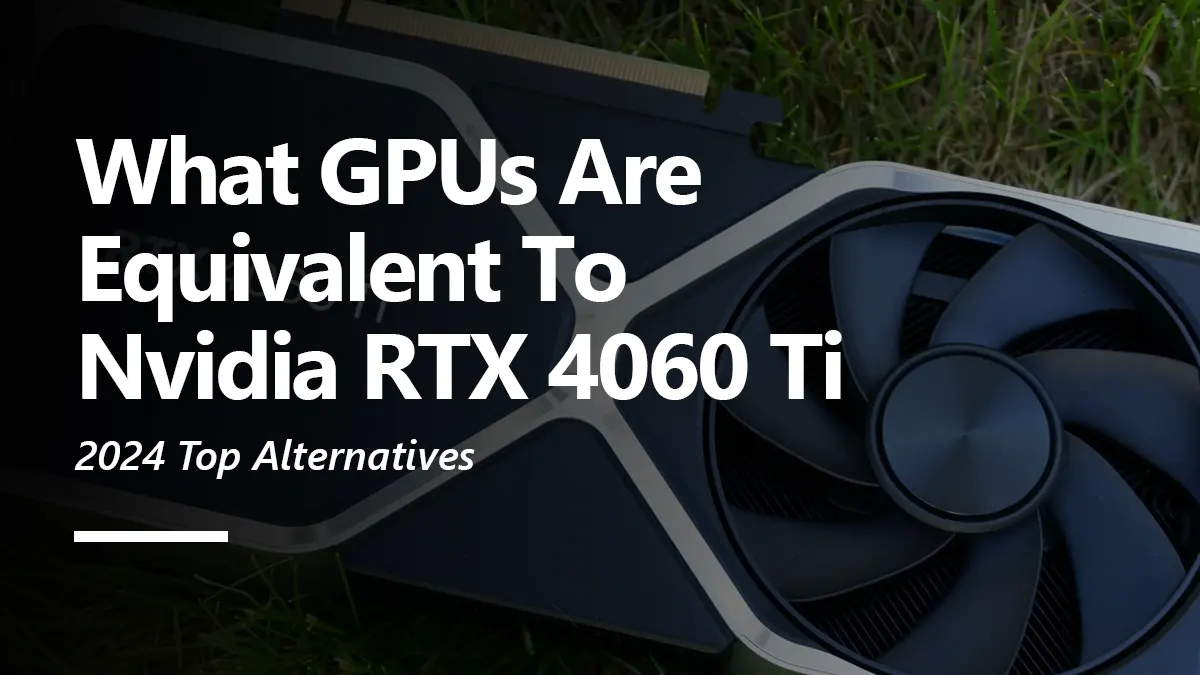AMD entered the game of graphics technology when it acquired ATI technologies but never managed to one-up or catch up to Nvidia’s potential for many years. However, in 2020, AMD released its RX 6800 XT graphics processor. AMD’s first high-end GPU facilitated a proper high-end performance for up to 4K graphics, even with higher bitrate streaming and content creation capability.
It is an excellent all-rounder with lots of raw power, trendy speeds, and power utilization for outstanding performance and tremendously outweighs Nvidia with its fascinating value. But it’s only for some, and some people would still want a likewise performance output from their desired brand of GPU manufacturers.
Hence, today, we will discuss some GPUs that are inherently equivalent to the RX 6800 XT and provide the same amount of 16GB memory, similarly powerful microarchitecture, and clock speeds. We will mainly judge these GPUs according to their performances, as Nvidia and AMD GPUs usually have distinct operating cores while having the same output.
GPU equivalent to the RX 6800 XT
Going by the 6800 XT’s mighty 7nm chip build, RDNA 2.0 architecture, 16GB GDDR6 memory, and cores clocked at 2.3 GHz, the best equivalent GPUs are the RTX 3080 and RTX 4070. The 3080 is a much more aligned competitor because it was launched around the same time while also entailing a similar chip and architectural design. The RTX 4070 is a comparatively modern alternative. Let’s explore each of these competitors in their designated portions.
AORUS RTX 3080 Xtreme
Coming above the 6800 XT by a measly 1% margin, the RTX 3080 is perhaps the best alternative to Team Red’s high-end behemoth. The 3080 uses the distinguished 30-series Ampere microarchitecture with an 8nm Samsung-fabricated processing chip that hides many nifty cores.
The RTX 3080 is particularly skillful at gaming and creative workload due to its hefty 8704 CUDA core count and a somewhat disappointing 10 Gig capacity. However, it makes up substantially for the defining outcome, made possible by aptly robust 68 raytracing and over 270 Tensor engines.
It is easily among the most formidable 4K output cards out there and still sees the light of day in many enthusiast-designed gaming builds. Its raytracing is marginally enhanced over the 6800 XT but lacks in certain tasks/titles that can quickly dry up its memory assets.
| Feature | GIGABYTE AORUS RTX 3080 XTREME | AMD Radeon RX 6800 XT |
|---|---|---|
| Architecture | Ampere | RDNA 2.0 |
| Core Clock (MHz) | 1440 MHz | 1825 MHz |
| Boost Clock (MHz) | 1905 MHz (+11%) | 2250 MHz |
| CUDA Cores | 8704 | 4608 |
| Memory Type | GDDR6X | GDDR6 |
| Memory Size (GB) | 10 GB | 16 GB |
| Memory Bus Width (bits) | 320 bit | 256 bit |
| Memory Speed (Gbps) | 1188 MHz 19 Gbps effective | 2000 MHz 16 Gbps effective |
| TDP (Watts) | 370 W | 300 W |
| DirectX Version | 12 Ultimate (12_2) | 12 Ultimate (12_2) |
| OpenGL Version | 4.6 | 4.6 |
| VR Ready | - | Yes |
| Ray Tracing Cores | 68 | 72 |
| Ports | 3x HDMI 2.1 3x DisplayPort 1.4a | 1x HDMI 2.1 3x DisplayPort 1.4a 1x USB Type-C |
| Price | $932.02 | $469.99 |
MSI RTX 4070 Ventus
This is a more modern counterpart of the RX 6800 XT. Although it performs around ten percent slower, it still is an outstanding competitor, with most of its efficiency coming into play in raytraced environments and creative tasking.
The RTX 40 is simply graceful in every manner, and with the cutting-edge 5nm chip in tandem with Ada Lovelace microarchitecture, you are in for an exclusively enhanced experience. The RTX 4070 has a much more rewarding 12 GB capacity with several robust cores that can clock up to 2.5 GHz speeds. The core count culminates almost 6 thousand CUDA units and 46 raytracing engines.
The 4070 manages a startling 4K performance, which is made better with DLSS 3.0 running on its 184 modernized Tensor cores. It is a mid-range card with the efficacy of past-generation high-end GPUs, which shows how much improvements new technologies can withhold.
| Feature | GIGABYTE AORUS RTX 4070 MASTER | AMD Radeon RX 6800 XT |
|---|---|---|
| Architecture | Ada lovelace | RDNA 2.0 |
| Core Clock (MHz) | 1920 MHz | 1825 MHz |
| Boost Clock (MHz) | 2595 MHz (+5%) | 2250 MHz |
| CUDA Cores | 5888 | 4608 |
| Memory Type | GDDR6X | GDDR6 |
| Memory Size (GB) | 12 GB | 16 GB |
| Memory Bus Width (bits) | 192 bit | 256 bit |
| Memory Speed (Gbps) | 1313 MHz21 Gbps effective | 2000 MHz 16 Gbps effective |
| TDP (Watts) | 200 W | 300 W |
| DirectX Version | 12 Ultimate (12_2) | 12 Ultimate (12_2) |
| OpenGL Version | 4.6 | 4.6 |
| VR Ready | - | Yes |
| Ray Tracing Cores | 46 | 72 |
| Ports | 1x HDMI 2.1 3x DisplayPort 1.4a | 1x HDMI 2.1 3x DisplayPort 1.4a 1x USB Type-C |
| Price | $876.02 | $469.99 |
Conclusion
The RX 6800 XT is an immaculate choice, but it misses out on some critical things that have become the staple of high-end GPUs. Things like Tensor cores that are hard-coded to provide hardware acceleration for Nvidia’s DLSS and DLAA phenomena. Further, its raytracing is simply short of giving a truthfully smooth and eye-soothing experience.
Anyhow, if you are willing to ignore these issues, then AMD provides their own Fidelity Super Resolution upscaling that they are adamant about improving further. The only thing left is raytracing, but to be honest, if you aren’t looking for this thing specifically, the RX 6800 XT is a pretty accomplished GPU.
With this article, we hope you got the insight you were looking for and can finally get some peace knowing that if not the RX 6800 XT, you still have two other delicious options. Although at an arguably higher price.




